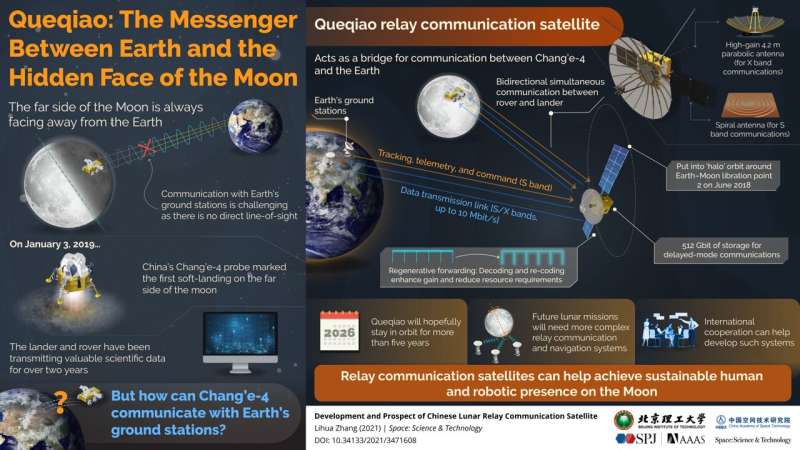China's Chang'e-4 probe marked the first soft-landing of a spacecraft on the far side of the Moon, which always faces away from Earth. To communicate with ground stations, Chang'e-4 relies on Queqiao, a relay communication satellite that orbits a point behind the Moon and bridges Earth and Chang'e-4.
Because of a phenomenon called gravitational locking, the Moon always faces the Earth from the same side.
This proved useful in the early lunar landing missions in the 20th century, as there was always a direct line of sight for uninterrupted radiocommunications between Earth ground stations and equipment on the Moon.
However, gravitational locking makes exploring the hidden face of the moon—the far side—much more challenging, because signals cannot be sent directly across the Moon towards Earth.
Source
Because of a phenomenon called gravitational locking, the Moon always faces the Earth from the same side.
This proved useful in the early lunar landing missions in the 20th century, as there was always a direct line of sight for uninterrupted radiocommunications between Earth ground stations and equipment on the Moon.
However, gravitational locking makes exploring the hidden face of the moon—the far side—much more challenging, because signals cannot be sent directly across the Moon towards Earth.
Source






















